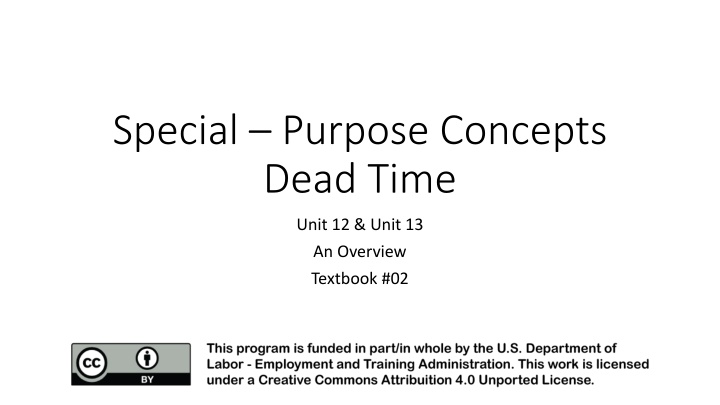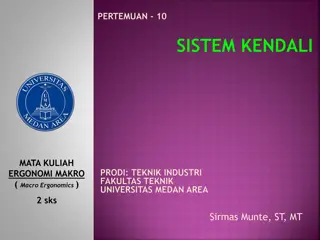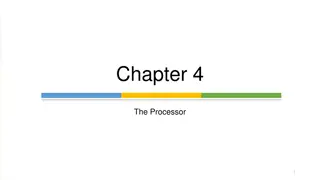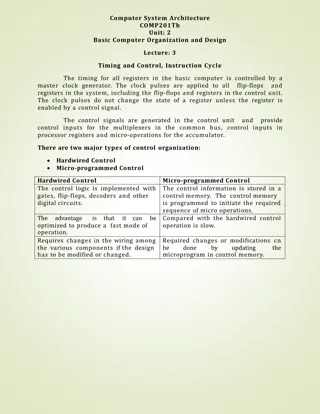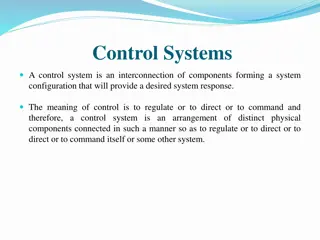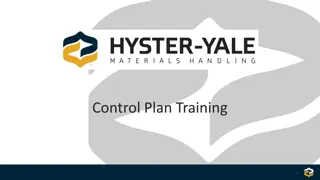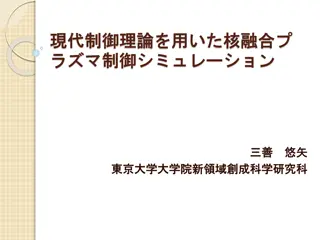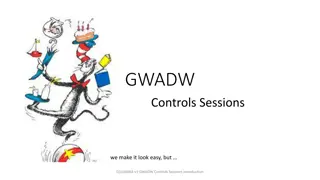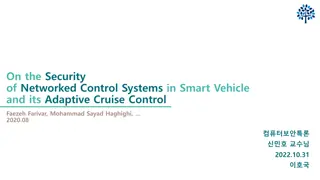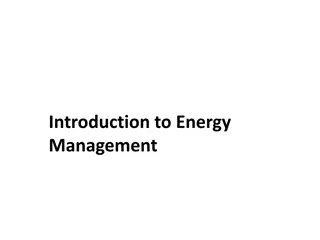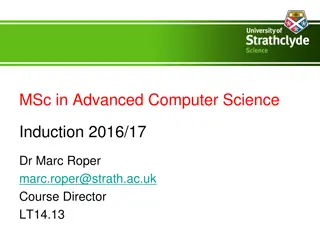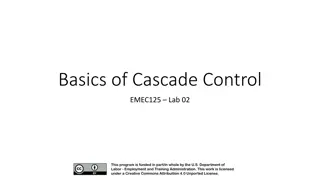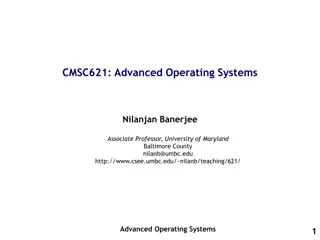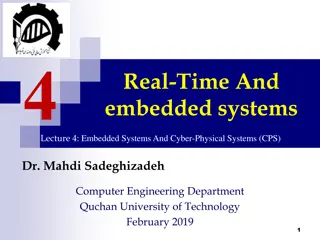Advanced Concepts in Control Systems: Unit 12 & 13 Overview
Exploring complex control systems, this overview delves into advanced topics from Unit 12 and 13 of a textbook, focusing on computations, algebraic sum/difference, product/quotient, square root calculations, and finding highest/lowest values in control processes. While not exam-related, understanding fundamental concepts is essential.
Download Presentation

Please find below an Image/Link to download the presentation.
The content on the website is provided AS IS for your information and personal use only. It may not be sold, licensed, or shared on other websites without obtaining consent from the author.If you encounter any issues during the download, it is possible that the publisher has removed the file from their server.
You are allowed to download the files provided on this website for personal or commercial use, subject to the condition that they are used lawfully. All files are the property of their respective owners.
The content on the website is provided AS IS for your information and personal use only. It may not be sold, licensed, or shared on other websites without obtaining consent from the author.
E N D
Presentation Transcript
Special Purpose Concepts Dead Time Unit 12 & Unit 13 An Overview Textbook #02
Unit 12 and Unit 13 An Overview Unit 12 and Unit 13 of textbook #2 contain advanced topics in control systems and is heavy in advanced mathematics. This lecture will be an overview of several topics within these units that should be understood and can appear on the final exam. Please do not get overwhelmed with the math or any of the control concepts presented in the textbook. You will not be responsible for them on any exams; however, they should be read to gain awareness. If there are any questions, please post the question(s) in the questions discussion topic. If needed, we can also do a live online meeting to discuss any questions you might have, individually or as a group. Many of these topics will be addressed in future courses within the program where there are hands-on examples to teach them.
Computing Components Complex control systems require more complex calculation(s). More complex calculations require the use of a computer or Programmable Logic Controllers/Programmable Automation Controllers (PLC/PAC).
Calculations Include: Algebraic Sum/Difference The algebraic sum or difference of signals. An example: Calculating the error in the system between the set point and the process variable. Error SP +- Control PV ????? = ?? ?? ????? = ?? ?? Feedback
Calculations Include: Algebraic Product/Quotient The algebraic product or quotient of signals. An example: Applying proportional gain to a control loop. ?? = ????? ?? ? ???: ?? ?? ???????????? ????
Calculations Include: Square Root The output signal is the square root of the input. An example: Square root extractors are used with flow transmitters/transducers. The equation to calculate volumetric flow rate Q is related to the pressure differential measured between the high and low pressure taps of an orifice plate flow meter. FT 2 ? ? = ??? ? 1 ?4
Calculations Include: Finding Highest/Lowest Finding the highest or lowest value. An example: Some times it is necessary to capture the highest or the lowest value that a variable has reached. Limiting a signal to a high or low limit. An example: There might be a process where the pressure can not exceed 80 psi. A limit can be imposed so that the pressure cannot exceed the 80 psi.
Calculations Include: Function Generator The output signal is a function of the input signal; a.k.a. Function Generator. An example: Assume a temperature transmitter that has a range of 250 F to 800 F. The span of the transmitter is: 800 250 = 550 . The transfer function of the transmitter relates its output signal to its input signal shown in the diagram and by the equation.
Calculations Include: First Order Lag The output signal is the solution of a first-order differential equation in which the input signal is the forcing function (step change); a.k.a. Linear Lag or First Order Lag. A lag is a delay in the response of a process that represents the time it takes for a process to respond completely when there is a change in the input of the process. 86.4% 63.2% 1st TC 2nd TC
Calculations Include: First Order Lag First Order Lag is described by the equation: ??? ??+ ? = ?? ? ??? ? = ??????,? = ?????,? = ????,? = ???? ???????? ? r c 1 + ?? ? ?? ? ??? ? ?? ? ? ????????? ????????
Calculations Include: First Order Lag What is a Heaviside operator? A Heaviside operator is Calculus. Calculus! Don t worry if you never had calculus, you will not have to do any. However, you should know that there is a lot of calculus in process control and you should understand what some of the terms mean.
Calculations Include: First Order Lag First Order Lag and the Heaviside Operator. The Heaviside Operator In process control, when a loop is tuned using Proportional Integral Derivative (PID), the derivative term is also referred to as, rate. Derivative (Rate) is nothing more than the rate of change of a process signal with respect to time, ? ??. Where ? is time. ? ?? is a calculus term called a derivative.
Calculations Include: Integral Function An output or input signal that is the time integral of the other, a.k.a. integrator (Integral) or totalizer. Integral is another calculus term and is the I term in a PID control loop. The integral portion is used to change the output of a process by an amount proportional to an error over time. It can be represented mathematically by: ? ? +1 ??? ?? 0 ? ??? ? ?? ? ? ?????,?? ?? ???? ??? ? ??? ?? ?? ???????? ?? ????? ???? ???? 0
Calculations Include: Lead-Lag Control Lead-Lag is an advanced topic control method that will be addressed in another course. The output of this type of control system is defined using a differential equation: 1 + ?1? 1 + ?2? ?????? = ? ????? ? ???:? = ????,?1= ???? ???? ????????, ?2= ??? ???? ????????,? =? ??
Ratio Control Soda water in Color to soda water ratio setting x Setpoint: amount of soda water required +- Motor Ratio Control Valve A control strategy used to control a secondary flow to the predetermined fraction, or flow ratio, of a primary flow. Flow sensor Fully mixed soda pop out Color sensor Colorant in Flow sensor Setpoint: amount of flavor required - + Motor Valve x Color to flavor ratio setting Flavoring in
Other Control Systems (Advanced Topics) Override Control Selective Control Duplex or Split-Range Control Auto-Selector or Cutback Control
Unit 13 Dead Time Control Please read through Unit 13 so that you are familiar with the terminology. It is an advanced control concept and can be defined in several ways and have many applications. For the most part, Dead Time is: The amount of time between a change in input and the start of the resulting response to that input. It is a definite delay that is deliberately placed between two related actions to avoid overlap that could permit a particular event to take place before it should.
